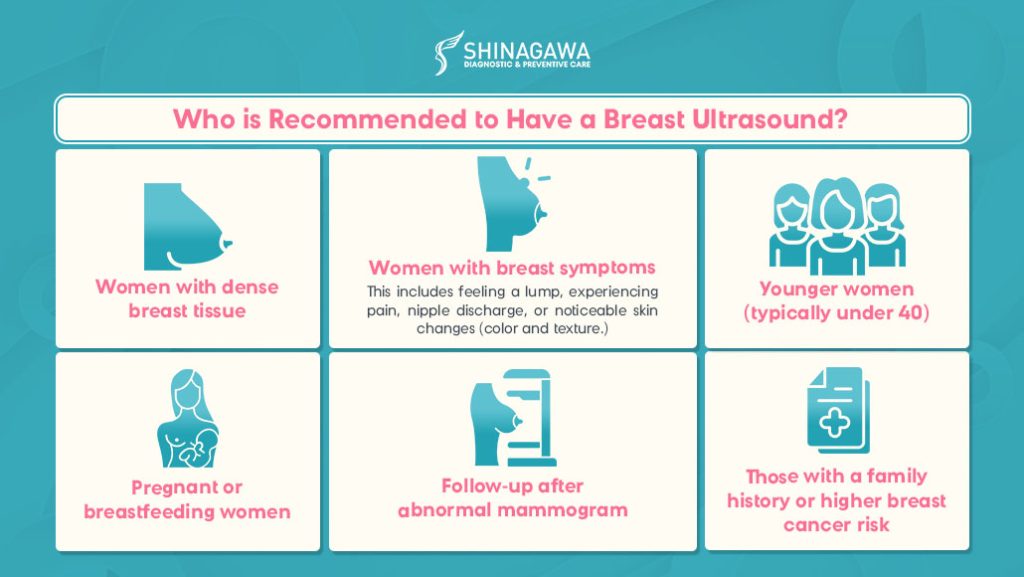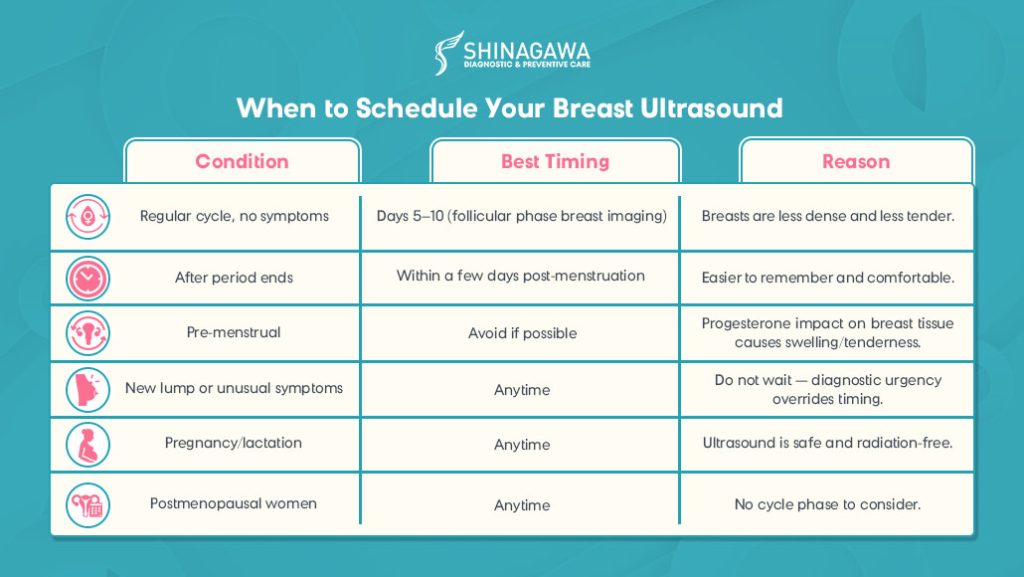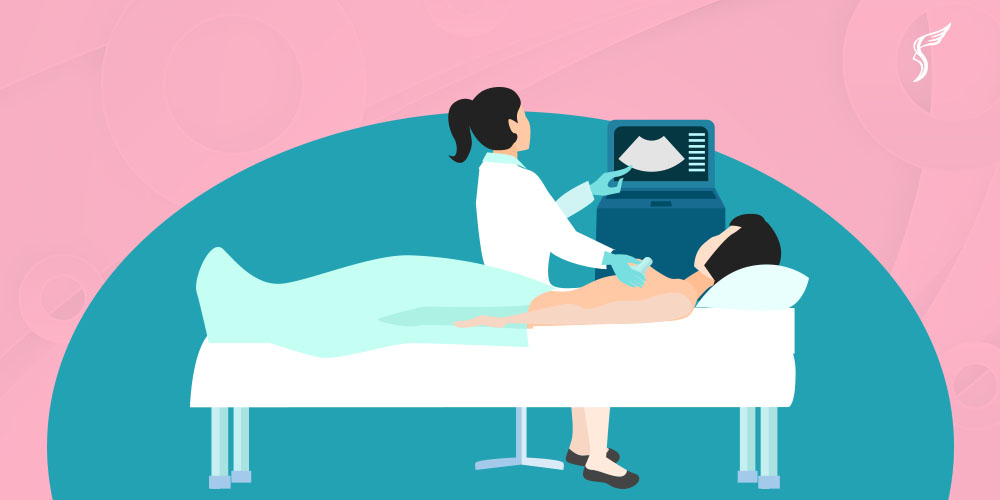Breast cancer remains as one of the most common cancer in the Philippines. Because of this, it’s important not only to make essential breast imaging exams accessible and convenient but also to educate patients on when and why these tests matter.
For procedures like breast ultrasound, timing can affect accuracy. Factors such as age, overall health, and menstrual cycle can help determine the best time to schedule it for reliable results.
What is a Breast Ultrasound? And Why Would You Need It?
A breast ultrasound is a safe, painless procedure that uses sound waves to produce detailed images of the breast’s internal structures.
Doctors typically order a breast ultrasound to investigate lumps, abnormalities, or pain, determine whether a mass is fluid-filled or solid, evaluate dense breast tissue, and follow up on mammogram findings or guide a biopsy if needed.

Why Does Timing Matter for Breast Ultrasound?
Timing plays a crucial role in the effectiveness and comfort of breast ultrasound examinations due to hormonal fluctuations throughout the menstrual cycle.
- Breast Tissue Density and Hormonal Fluctuations
- During the menstrual cycle, estrogen and progesterone levels naturally rise and fall. About a week before your period, higher estrogen levels cause the breast ducts to expand and retain fluid, making breasts feel fuller and more tender. This can make the procedure less comfortable and may produce denser images that can hide small abnormalities on an ultrasound
- Optimal Timing for Clarity and Comfort
- Scheduling your breast ultrasound between days 5 and 10 of your menstrual cycle (about a week after your period starts) is ideal. During this time, hormone levels are lower, making breast tissue less dense and tender — resulting in clearer images and a more comfortable experience.
- Considerations for Irregular Cycles or Hormonal Treatments
- If your menstrual cycle is irregular, or you’re perimenopausal or taking hormonal medication, try to schedule your breast ultrasound when your breasts feel least swollen or tender. You can also consult your doctor to help determine the best timing for you.

However, if you notice any symptoms such as a new lump, nipple discharge, or skin dimpling, do not wait for a specific day of the cycle. Schedule your breast ultrasound immediately.
Preparing for a Breast Ultrasound
Most patients are relieved to know that little preparation is required. You can eat and drink normally, and no special medications are needed. Here are a few tips:
- Avoid lotions, powders, deodorants on or around the breasts on the day of the exam
- These can leave residue on the skin that interferes with sound wave transmission and image clarity
- Wear loose, comfortable clothing that you can easily remove above the waist
- You will need to undress from the waist up and wear a gown during the exam
- Remove jewelry and metal items
- These might interfere or simply make positioning more difficult.
- Bring any prior imaging reports or scans
- Having prior mammograms, ultrasounds, or reports helps the radiologist compare and see changes over time
What to Expect During the Breast Ultrasound
- You will lie on an exam table (often on your back or side), and may be asked to raise your arm above your head to better position the breast.
- The technologist will apply a water-based gel to the breast and use a handheld transducer to scan the area.
- The procedure typically takes 15–30 minutes, though this can vary if more views or comparisons are needed.
- After the scan, the gel is wiped off, and you can usually resume normal activities immediately.
Get your Breast Ultrasound at Shinagawa Diagnostic
Empowering women with the right knowledge encourages early detection, which is crucial for better outcomes and successful treatment.
At Shinagawa Diagnostic, we are committed to helping you understand your breast health better. Handled by our team of expert radiologists and doctors, each breast examination is performed with precision and care to ensure you are well-informed about your condition.
Furthermore, your breast ultrasound results are carefully reviewed by both Filipino doctors and Japanese medical experts. With our double reading method, every finding is thoughtfully examined to minimize errors, giving you accurate results and peace of mind.
Through the use of advanced technology, we provide accurate and timely results that support early detection and effective management of any potential concerns.
Disclaimer: This article is for educational purposes only and does not replace professional medical advice. Please consult a qualified healthcare professional for an accurate diagnosis and treatment.
Citations and Resources
Shinagawa Diagnostic & Preventive Care is committed to delivering accurate, reliable, and up-to-date health information. All content published on our platform is grounded in evidence-based research and reviewed by qualified professionals where applicable.
To support our articles, we reference authoritative sources such as peer-reviewed medical journals, official health organizations (e.g., World Health Organization, Department of Health Philippines), and expert guidelines. Where appropriate, we also include data from trusted research institutions and clinical studies.
Our goal is to provide well-researched content that empowers you to make informed choices about your health, diagnostics, and preventive care.
Book an appointment now

Inquire

Book


